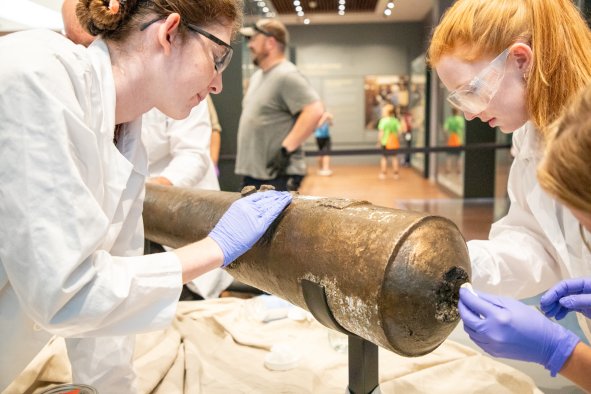Support truly
independent journalism
Support Now
Our mission is to deliver unbiased, fact-based reporting that holds power to account and exposes the truth.
Whether $5 or $50, every contribution counts.
Support us to deliver journalism without an agenda.

Louise Thomas
Editor
Homo floresiensis, a species of humans dubbed “Hobbits” for their short stature, were even smaller than previously thought, a new fossil study has revealed.
The species, related to modern humans, was first discovered in 2003 at the Liang Bua cave on Indonesia’s island of Flores, after which they are named.
Archaeologists found that the small-brained people lived on the island as recently as 50,000 years ago, when our own species, Homo sapiens, was already long established in Australia to the south.
Initial fossils suggested that individuals of the species grew up to about three feet six inches tall with small brains and large teeth for their tiny size. The origin of the species remained a mystery, however, due to the rarity of their fossils.

It was initially believed that Homo floresiensis was a dwarfed descendant of the early Asian populations of human ancestor species Homo erectus.
Some researchers speculated that the “Hobbits of Flores” were a late-surviving remnant of a more ancient small-statured human ancestor species from Africa predating even Homo erectus.
At a site called Mata Menge, 75km east of the Liang Bua cave on Flores, researchers previously found other ancient human fossils including a jaw fragment and six teeth dating to around 700,000 years ago.
The fossils of a yet-undiscovered species appeared to be from three individuals with even smaller jaws and teeth thanHomo floresiensis. Based on this, researchers believed the small body size of Homo floresiensis likely evolved earlier in the history of the species.
Now, scientists have found three more fossils at Mata Menge, dating to 700,000 years ago, including a tiny adult humerus bone, part of the lower half of the upper arm.

They estimated from these bones that the body height of an adult Homo floresiensis was only about 100cm, about 6cm shorter than the height of the “Hobbit” skeleton from Liang Bua.
“This 700,000-year-old adult humerus is not just shorter than that of Homo floresiensis, it is the smallest upper arm bone known from the hominin fossil record worldwide,” Adam Brumm, co-author of the study at Australia’s Griffith University, said.
“This very rare specimen confirms our hypothesis that ancestors of Homo floresiensis were extremely small in body size. However, it is now apparent from the tiny proportions of this limb bone that the early progenitors of the ‘Hobbit’ were even smaller than we had previously thought.

Further analysis suggested the Mata Menge fossil individuals were likely “direct ancestors” and “an older variant” of Homo floresiensis, but with less specialised teeth than their descendants.
The tiny arm bone examined in the new study hints that extreme body size reduction occurred early in the history of the Flores “Hobbits”.
“The new fossils strongly suggest that the ‘Hobbit’ story did indeed begin when a group of the early Asian hominins known as Homo erectus somehow became isolated on this remote Indonesian island, perhaps a million years ago, and underwent a dramatic body size reduction over time,” Dr Brumm said.
Disclaimer: The copyright of this article belongs to the original author. Reposting this article is solely for the purpose of information dissemination and does not constitute any investment advice. If there is any infringement, please contact us immediately. We will make corrections or deletions as necessary. Thank you.



